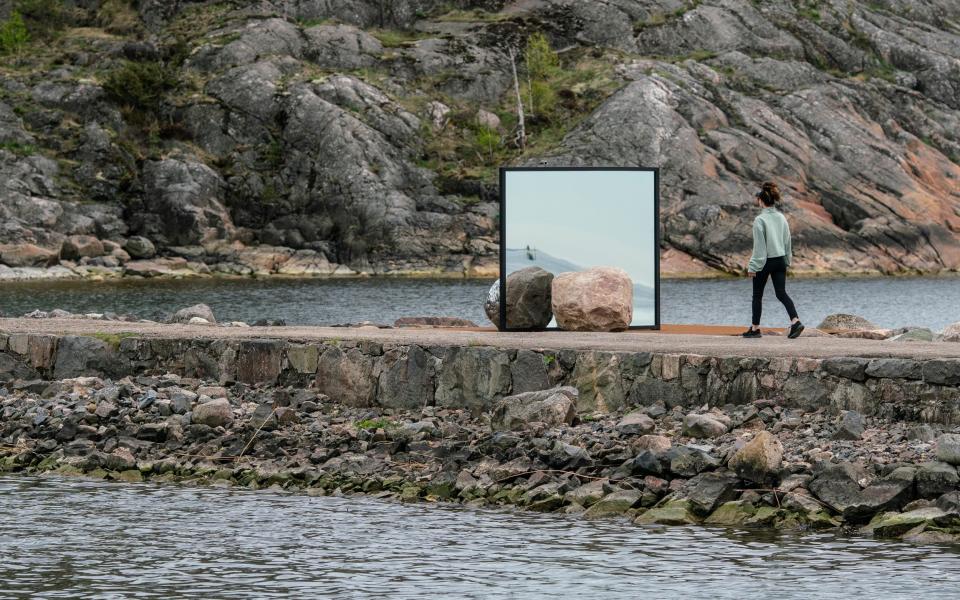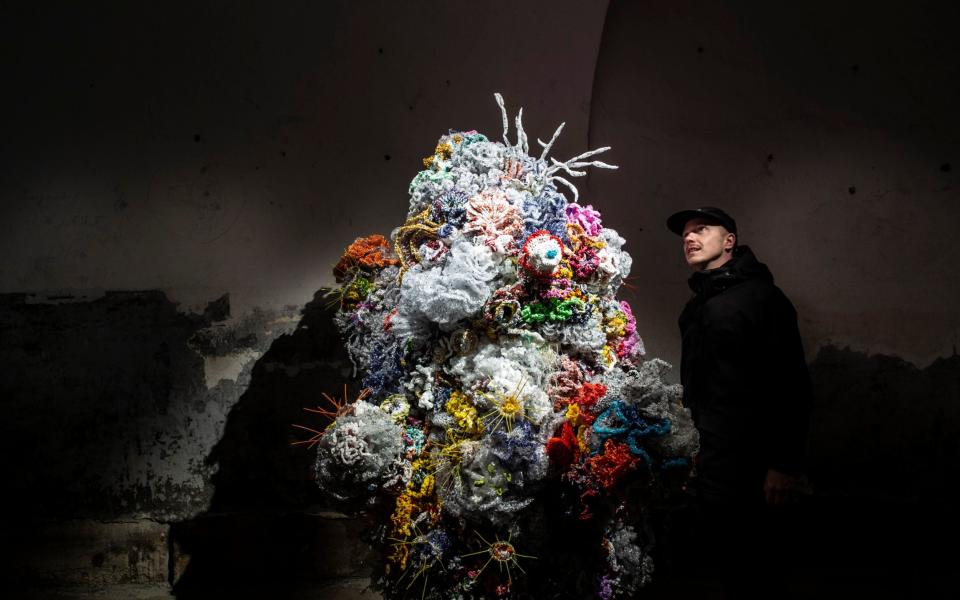The international art festival on a forgotten Finnish island

Fancy organising an international art event, during a global pandemic, on an abandoned island? This was the daunting task that fell to those behind the first Helsinki Biennial, a first-of-its-kind indoor/outdoor experience set on Vallisaari, a former military island in the picturesque Helsinki archipelago, bringing together contemporary artists from around the world. The result? An international extravaganza which – two months in – has outstripped even the expectations of its organisers, and simultaneously brought life and meaning back to a forgotten island with a chequered past.
Postponed in 2020, the Finnish capital’s inaugural Biennial opened its doors on June 12 this year, and is now in the process of crescendoing into its final month. Its title, The Same Sea, is a reference to Vallisaari’s history as a maritime fort, as well as the stretch of water that separates it from Finland’s capital city, Helsinki, now considered one of Europe’s trendiest, edgiest urban centres, and in stark contrast to Vallisaari island’s incredible, wild – and, historically, shrouded – beauty.
Despite this, the island has proved a prime spot for an international art event, and a point of fascination in its own right. Less well-known than its sister isle, Suomenlinna, once Helsinki’s main sea fort, Vallisaari’s history is one of intriguing extremes – from early 19th-century Russian base to Finnish torpedo store, thriving 1950s civilian community and, finally, abandoned outpost. Though it has been open to the public since 2016, strict controls intended to protect the island’s ecosystem meant that even locals were unable to explore in much depth.

Until now. Opening up the island to international tourism, the Biennial has given this enticing little outcrop a new lease of life – and a whole new appeal for swathes of art and nature-loving visitors – as well as those looking to venture into parts unknown. Around a third of the artworks are set outdoors along marked trails, with others housed inside gunpowder cellars and residential buildings, giving visitors a chance to engage not only with new works of art, but with the island’s intriguing – and somewhat unnerving – past.
The effect is acute. When the ferry docks after the 20-minute sail from Helsinki, you’re greeted by towering scaffolding. Finnish artist Jaakko Niemelä’s Quay 6 sounds a note of warning, rising to the height the Baltic Sea might reach if Greenland’s northern ice sheet were to melt, while Alicja Kwade’s 2019 sculpture Big Be-Hide, set on the strip connecting Vallisaari with neighbouring Kuninkaansaari, places two boulders – one real, one a metallic replica – either side of a mirror, an opposition between the natural and the man-made.
FOREST (for a thousand years…), meanwhile – an atmospheric sound installation by Canadian artists Janet Cardiff and George Bures Miller – looks back, rather than forwards, portraying the sounds heard on Vallisaari throughout its history, juxtaposing birdsong with gunfire. Teemu Lehmusruusu’s hybrid, solar-powered artwork House of Polypores (2021) goes one step further: it invites visitors to listen to the island itself, using mycotecture – made of mushrooms – to pick up changes in the trees, converting the sound of decaying wood into thunderous organ music.
Some artworks even concentrate on the island’s now tenuous links to the modern world. Paweł Althamer collaborated with inmates from Suomenlinna open prison – who do maintenance work on Vallisaari – to shoot the part-VR and part-documentary film Seven Prisoners (2020). Other works engage with Vallisaari’s former population, with oil landscapes, still lifes, and a self-portrait by army meteorologist Topi Kautonen adorning the walls of the “Pilot House”, where he once lived.

But it’s Sari Palosaari’s Eons and Instants (2021) which chimes most acutely with the eerie remnants of military architecture that are being slowly swallowed by creeping greenery.
The installation sees rocks, from the island, loaded with a soundless cracking agent which causes them to undergo a slow explosive process.
“The inner forces of the materials influence each other and autonomously transform the work,” says Palosaari. “The concept of ‘conserving nature’s stage’ is key. It sees the crust of the Earth as a ‘rocky stage’, one which offers habitats for diverse life.”
But those keen to explore this particular rocky stage will have to be quick – once the Biennial ends on September 26, no trace of the artworks will remain on Vallisaari. Three will be placed in residential areas in Helsinki, however – including Kwade’s works in Kalasatama – so if an abandoned island doesn’t sound your cup of tea, you’ll still have an excuse for an arty Finnish city break.
How to do it
Helsinki Biennial runs to Sep 26; free entry. Ferries depart for Vallisaari from the Helsinki Biennial pavilion next to the Old Market Hall, Market Square, leaving every hour on the hour; tickets adults/children €8.49 (£7.28)/€4.25 (£3.64). Finnair, BA and Norwegian all fly direct from London to Helsinki. Read Telegraph Travel's guide to Helsinki here


